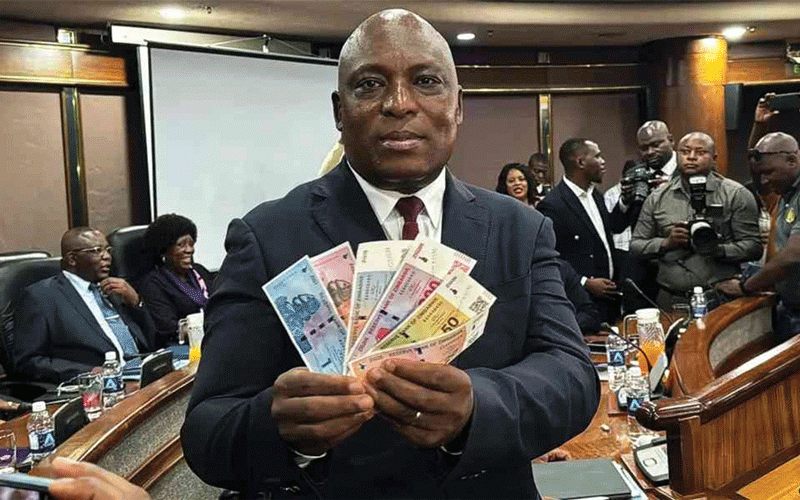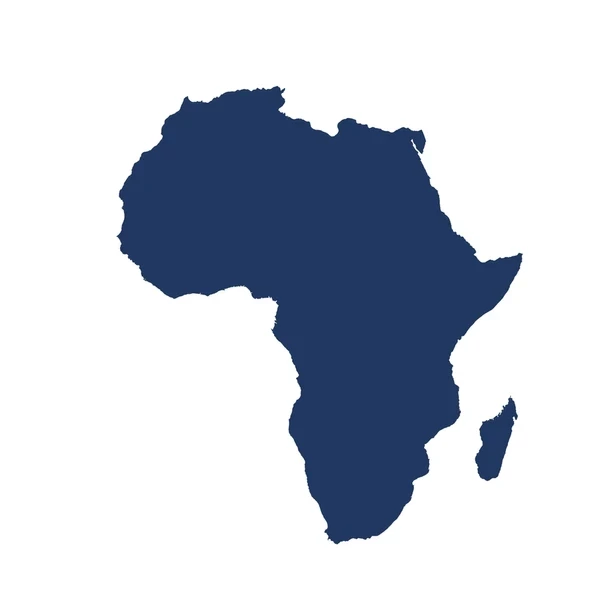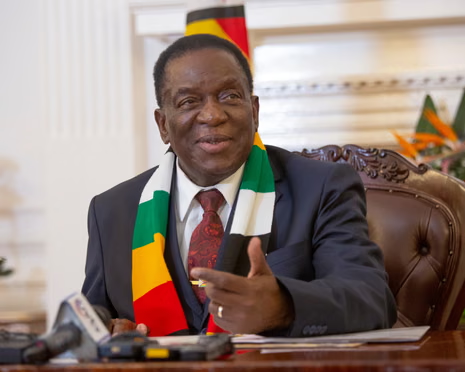
For over a decade, Zimbabwe’s currency woes have been at the forefront of its economic challenges.
From 2008, when the Zimbabwean dollar (ZWL) collapsed under the weight of hyperinflation, to the recent introduction of the Zimbabwe Gold (ZiG) in 2024, the country has employed numerous strategies in an attempt to stabilise its currency.
Yet, despite these efforts, the government has continuously struggled to tame inflation, stabilise its economy, and address the rampant black market that undercuts official currency exchange rates.
This article delves into Zimbabwe's journey through currency turmoil, from the collapse of the Zimbabwean dollar in 2008, the introduction of multiple foreign currencies, and the adoption of the ZiG, which is now facing depreciation in value.
The government's failure to manage the black market further exacerbates the ongoing crisis, and it appears Zimbabwe’s currency troubles are far from over.
The collapse of the Zimbabwean dollar (2008)
Zimbabwe’s currency crisis began with the collapse of its original Zimbabwean dollar in 2008.
The country was experiencing hyperinflation on an unprecedented scale, with inflation rates peaking at 79.6 billion percent by November 2008, according to the International Monetary Fund (IMF).
- 2024 budget strategy paper: Zim’s future looks bleak
- Village Rhapsody: Why Zimbabwe is struggling to fix its currency conundrum
Keep Reading
At the time, the Zimbabwean dollar became virtually worthless, with citizens forced to carry millions and even billions of ZWL to buy basic goods.
The causes of this hyperinflation were multifaceted: economic mismanagement, land reforms that disrupted agricultural productivity, and a series of sanctions from Western nations that crippled foreign direct investment.
The government’s response of printing more money only worsened the crisis.
By 2009, Zimbabwe abandoned its currency altogether, marking the first major shift in its monetary system.
The era of multiple currencies (2009-2016)
In 2009, Zimbabwe adopted a multi-currency system, allowing the US dollar, South African rand, British pound, Botswana pula, and other foreign currencies to be used as legal tender.
This decision helped stabilise the economy in the short term. Inflation dropped, and economic activity showed signs of recovery.
For the first time in years, there was a semblance of price stability, and Zimbabweans enjoyed a reprieve from the daily currency-related challenges they had faced.
However, the reliance on foreign currencies brought its own set of challenges.
The US dollar became the dominant currency, leading to a scarcity as the government lacked the means to print it.
This caused liquidity shortages, as Zimbabwe's import-dependent economy drained the available US dollars faster than they could be replenished.
By 2016, the currency shortage had reached a critical point, and the government faced pressure to find a solution.
The introduction of bond notes (2016-2019)
In response to the liquidity crisis, the Reserve Bank of Zimbabwe (RBZ) introduced bond notes in 2016.
These were a form of surrogate currency, officially pegged at par with the US dollar.
The introduction of bond notes was met with skepticism, as many feared it would lead to inflation and a return to the chaos of the previous decade.
Initially, the bond notes did provide some relief, as they were intended to ease the cash shortage.
However, the one-to-one peg with the US dollar quickly collapsed, and the bond notes began to lose value on the black market.
By 2018, the black market rate for bond notes was far higher than the official exchange rate, leading to inflationary pressures.
The bond notes, rather than solving the problem, exacerbated the situation. Inflation returned, and confidence in the monetary system eroded.
Citizens began hoarding US dollars again, further draining liquidity from the economy.
The return of the Zimbabwean dollar (2019)
In 2019, the government made a bold move by reintroducing the Zimbabwean dollar (ZWL) as the sole legal tender.
The multi-currency system was officially abandoned, and the government hoped to regain monetary sovereignty by managing its currency. This move was met with both optimism and skepticism, as the memories of the 2008 hyperinflation were still fresh in the minds of many Zimbabweans.
Unfortunately, the reintroduction of the ZWL did not go as planned. Inflation quickly spiraled out of control, reaching over 500% by 2020, according to Zimbabwe’s National Statistics Agency.
The Covid-19 pandemic worsened the situation, further straining the economy and undermining efforts to stabilise the currency.
The black market flourished during this period, as the official exchange rates were widely seen as unrealistic.
The gap between the official rate and the black market rate grew, leading to price distortions, shortages of essential goods, and a loss of public confidence in the ZWL.
The gold backed Zimbabwe Gold currency (2024)
In 2024, facing renewed inflationary pressures and a loss of confidence in the Zimbabwean dollar, the government introduced the Zimbabwe Gold, which is it said was backed by gold.
This currency was designed to be a stable, gold-backed alternative to the ZWL, giving Zimbabweans a way to store wealth in a more reliable form of currency.
The idea was that by linking the currency to gold, inflation would be kept in check, and the public would regain trust in the government’s monetary policy.
However, it has become evident that the ZiG is also failing to live up to expectations. Despite being backed by gold, the ZiG has begun to lose value.
This is partly because the gold reserves that supposedly backed the currency are insufficient to cover the volume of ZiG issued.
Furthermore, the black market, which has long been a thorn in the side of Zimbabwe's currency management, continues to undermine the official exchange rate of the ZiG.
The black-market problem
At the heart of Zimbabwe's currency crisis is the persistent and powerful black market.
Despite government efforts to clamp down on illegal currency trading, the black market remains a major player in the country’s economy.
One of the reasons for the black market’s resilience is the government's unrealistic exchange rates.
The official rates are often far below what the market perceives as the true value of the currency, creating opportunities for arbitrage.
As long as the government maintains artificial exchange rates, the black market will continue to thrive.
This parallel market exacerbates inflation, as businesses and individuals must turn to the black market for foreign currency, leading to price hikes.
It also undermines any trust in the official currency, as people prefer to hold US dollars or other foreign currencies that retain their value better.
Zimbabwe's currency crisis is a reflection of deeper economic mismanagement, exacerbated by global economic trends and internal inefficiencies.
The government’s repeated attempts to stabilise the currency — from abandoning the Zimbabwean dollar in 2009, to adopting a multi-currency system, issuing bond notes, reintroducing the ZWL, and finally the ZiG — have all failed to address the underlying problems. Until Zimbabwe can address its economic fundamentals and curb the black market, its currency troubles will likely persist.
- Gary Gerald Mtombeni is a journalist based in Harare. He writes here in his own personal capacity. For feedback Email garymtombeni@gmail.com/ call- +263778861608










